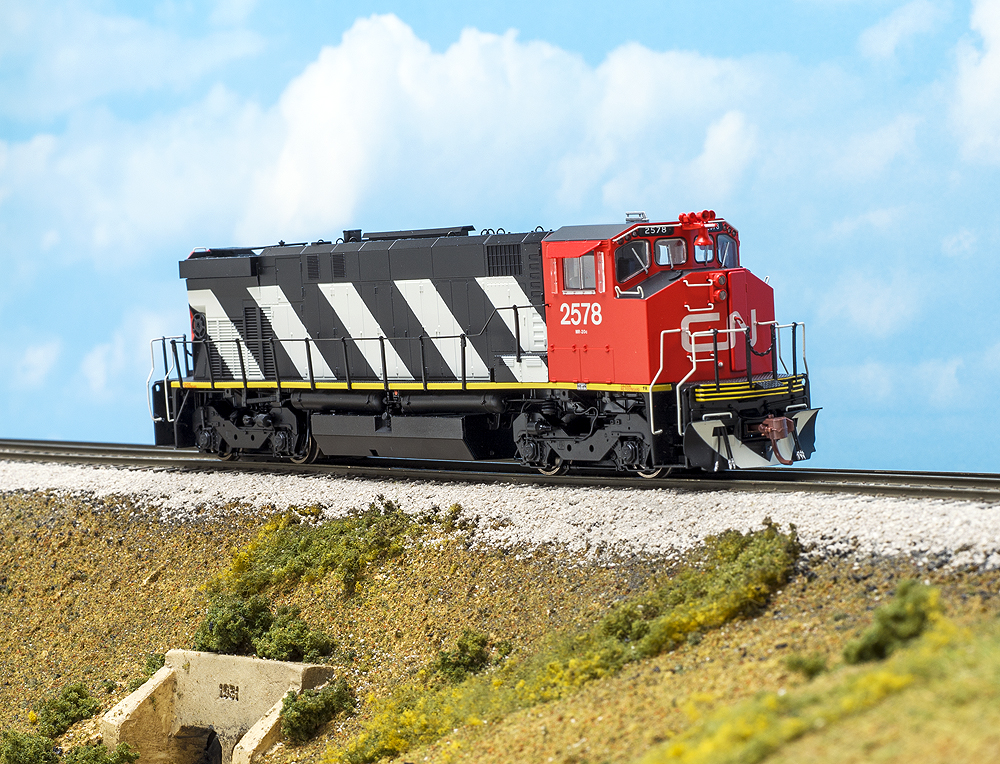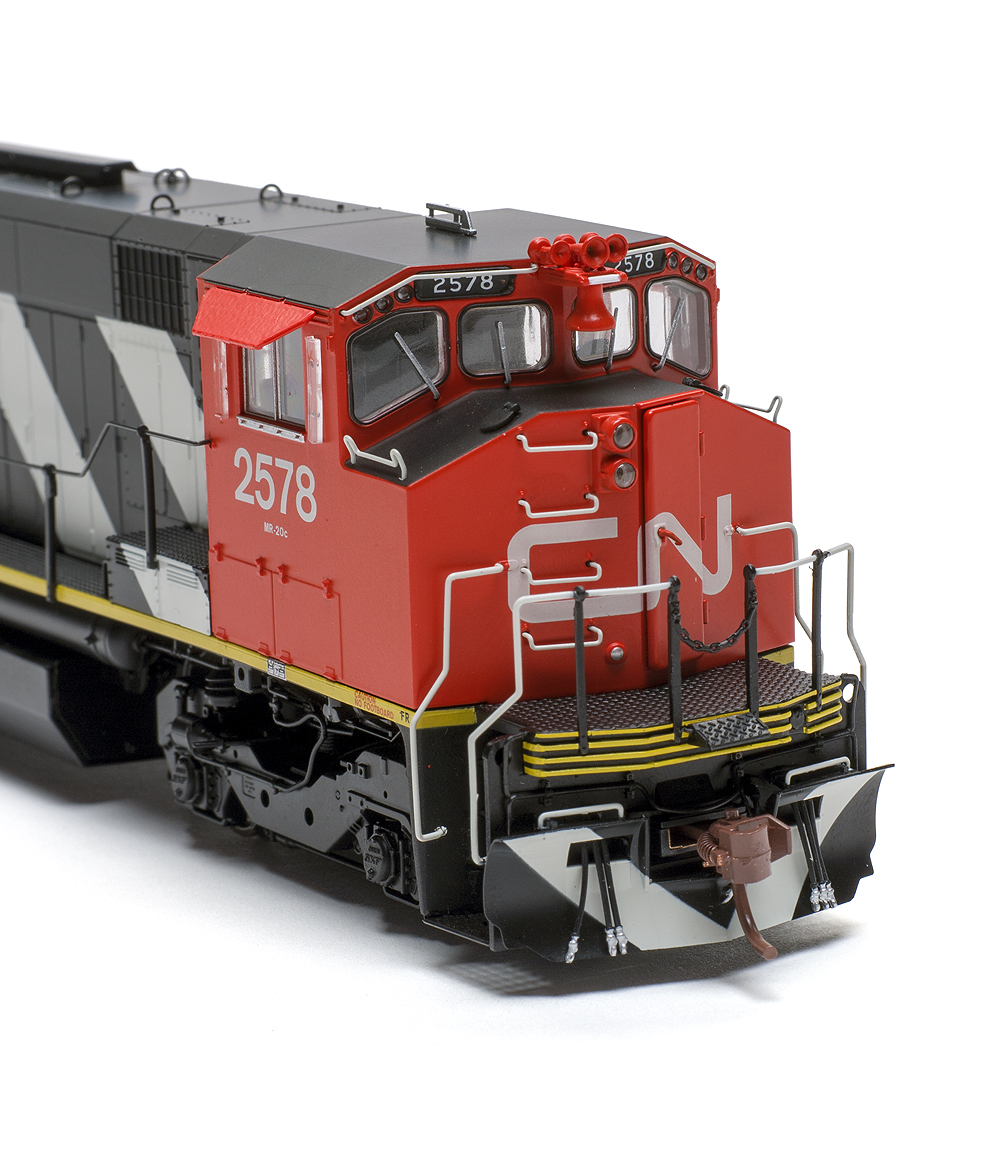
Rapido Trains is bringing the comfort, Canadian style. We recently received a sample of the company’s new Montreal Locomotive Works (MLW) M420 locomotive, and it’s a beauty, eh?
The prototype
When Alco locomotive production ceased in Schenectady, N.Y., in 1969, locomotives continued to be built in Canada by former subsidiary Montreal Locomotive Works until 1985. While MLW never offered its own version of the Century-series C420, it did develop a 420 for its “M” line of Montreal-designed power.
The M420 used a 2,000-horsepower 12-cylinder 251 series diesel engine and AC traction. It also introduced the wide-nose Canadian cab (also known as the comfort or safety cab) to North American rails. One of the main features of this cab was a reinforced nose section to protect the locomotive crew in the event of a collision.
Just over 100 units were built for four railroads between May 1973 and February 1977. Canadian National (CN) received 80; British Columbia Railway took 16, half of which were cabless B units; Ferrocarriles del Estado bought two; and Providence & Worcester had five, which rode on Alco AAR type B trucks from traded-in Alco RS-3s.
All other M420s rode on MLW’s Zero Weight Transfer trucks. Some of these locomotives are still in service on short lines across North America.

The model
Our sample from Rapido is painted in the CN zebra-stripe scheme and captures the look of the prototype well. As usual, there are hundreds of detail parts on the shell and underframe. There’s also a detailed interior and a new feature – a replaceable nose door. After carefully prying the closed door off the model with the tip of a hobby knife, Cody Grivno installed an open door in its place. (Check out the video accompanying this review for the unexpected turn of events.)
With the open door in place, you can see the passage leading to the cab. It wasn’t uncommon for crews to operate with this door open to get some natural air conditioning in the summer. Just be sure to replace the open door with the closed door if you’re going to pack up the model in its original container. Ours got a little mangled, but it should be OK.
Another feature I really appreciate is Rapido’s wire and plastic handrails. The plastic stanchions are well detailed, and the wire railings are sturdy and scale sized. The assembly still has a bit of flex built in to withstand normal handling.
The model measured within scale inches of drawings in the Car and Locomotive Cyclopedia Centennial Edition (1974) from Simmons-Boardman. All of the paint was opaque and smoothly applied with sharp color separations. Lettering was likewise sharp, opaque, and legible down to the smallest type.
Because of all the detail parts on the model, I didn’t try to remove the shell. An exploded-view drawing shows the model has a center-mounted motor with flywheels. The motor is concealed in a horizontally split die-cast metal frame. A motherboard is screwed into the top half of the frame, and the Electronic Solutions Ulm (ESU) LokSound V5 decoder plugs into that. A pair of downward-facing sugar cube speakers are in an enclosure mounted just ahead of the rear truck.
On the test track
Cody and I tested the locomotive on the MR staff’s Milwaukee, Racine & Troy layout. The Rapido M420 put its 1-pound, 2.4-ounce weight to use, pulling 15 cars up the 3 percent grade. The burble of an Alco 251C is always popular, and the LokSound version sounds as good as expected.
The operating classification and marker lights were fun, and toggling between the white (extra), green (second section), and red (marker) lights using Function 11 (F11) revealed a hidden Easter egg when I accidentally triggered F21 and heard an accented voice say “Well, I’ve been a hunter all my life. I love animals. That’s why I like to kill ‘em.” Turns out that was Monty Python’s Flying Circus member Graham Chapman as Hank Spim in the Mosquito Hunters sketch. There are other sound clips waiting to be found on there, as well.
This is another well-detailed model from Rapido. The innovative handrails appear to be the company’s new standard. The optional open door adds another feature that boosts realism without being a gimmick, and the sounds and lighting features make this a fun locomotive to operate. Canadian modelers hit the jackpot with this one.













